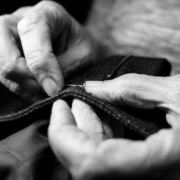Searching for Washoku in all the wrong places
Despite the global popularity of Japanese cuisine, finding truly authentic Washoku outside Japan remains a challenge. After eating at many Japanese restaurants, some not just mediocre but exceptionally bad, has underscored the difficulty of finding genuine Washoku. Washoku is not any type of Japanese food. This type of cuisine is a culinary art form, not only celebrated for its aesthetics, balance, presentation, and use of seasonal ingredients, but it is recognized by UNESCO as part of Japanese cultural heritage.
Before proceeding, my argument here has nothing to do with how much the meal costs, the ambience of the restaurant, nor the quality of the service that the restaurant delivers. And like a well-known and skilled musician who occasionally makes mistakes playing a song or gives a bad performance, chefs, the kitchen staff, and eating establishments can have a bad night. Hopefully it’s not the time that you show up. And just like criticizing a pizza joint that serves lousy pappardelle, it’s unfair criticizing a Japanese restaurant that specializes in sushi because their Washoku was not up to par.
What Defines Excellent Washoku?
Authenticity is the cornerstone of most types of cuisine. In the case of Washoku it means preparing it in a traditional manner, using genuine ingredients, and making minimal modifications to recipes that do not distort the integrity of the dish. Authenticity in Washoku is not just about ingredients but also about preserving a culinary heritage that dates back centuries. This involves meticulous attention to seasonal ingredients, traditional techniques, and presentation aesthetics that honor Japanese culture.
What Makes a Great Japanese Restaurant?
A great Japanese restaurant stays true to traditional recipes, uses fresh, high-quality ingredients, and employs chefs who respect the intricate techniques of Japanese cooking. Authenticity is also reflected in the careful preparation and presentation of each dish.
Although high ratings on websites like Yelp, Trip Advisor, Google Maps, and earning Michelin stars can be helpful, they are often misleading. On the other hand, certain warning signs and signals can help identify inauthentic establishments:
- The term “fusion” in publicly available descriptions (i.e., reviews, advertising).
- All you can eat or buffet style options as part of the way food is sold.
- There is a DJ spinning music.
- A disproportionate focus on sushi and sashimi.
- An emphasis on selling the celebrity chef’s or restaurant’s cookbook rather than culinary excellence.
- A focus on service or ambience rather than the excellence of the food and its preparation.
- Ownership or chefs without proper training in Japanese cuisine.
How to Find Authentic Japanese Restaurants
Finding a restaurant that serves Washoku can be challenging. Here are some of the things I do to increase the likelihood I will find a great one:
Avoid Fusion: Although fusion cuisine has its merits, it typically strays from traditional Japanese cooking practices. For a true Washoku experience, seek out restaurants that focus on classic dishes.
Consult or join local Japanese community groups or on-line forums: These networks often share recommendations on great eating establishments.
Scan Reputable Lists: Consult current articles that might be found on CNN Travel’s top 10 Japanese restaurants, or Condé Nast Traveler as a starting point. Verify the current status and reviews of these restaurants to ensure they maintain their standards. Look for detailed rand unbiased reviews from qualified experts, and other sources.
Observe Local Patronage: Restaurants frequented by Japanese locals are often a good indicator of authenticity. This may require a few visits to gauge the clientele accurately.
Kissing a lot of frogs: Sometimes finding a great Japanese restaurant involves trying several places. This trial and error process is resource intensive. This is especially difficult if you lack the time and money to explore alternative restaurants.
Take aways
Finding a restaurant outside of Japan that prepares and serves authentic Washoku is challenging but can ultimately result in a great meal and experience. This process underscores the importance of authenticity in enjoying a particular cuisine. Achieving authenticity means ignoring hype and focusing on quality which is typically done by conducting thorough research but also keen observation and patience. This may result in a genuine appreciation for well-respected culinary traditions, thereby promoting respect for these cultural practices.
Photo Credit
Utagawa Hiroshige’s Eagle Over Jumantsubo Susaki, Fukagawa
Woodblock Print 1857.












